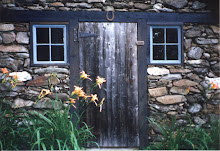When I look at Gerard Bellaart's artworks, I see three separate but integrated aspects of his mastery: the large paintings that bring a dream world out of hiding; the drawings and etchings that range in emotion from intense frenzy to delicate contemplation both in subject matter and technique; and the inked printings of various kinds -- such as the "fragmentations" and "stenciled texts," as he calls them -- which strike the eye with brilliant motifs based on ideas taken from literary sources.
With an artist as prolific as Bellaart, it is easy to lose sight of what he is best at or what he himself may consider the summit of his achievement. From the sheer number and size of his most recent paintings, it would be reasonable to say they are his most important works not only because he has devoted so much energy to them but because they are the most ambitious. The paintings of the last dozen years or so deepen and broaden themes that have persisted from the beginning. They recapitulate and summarize on a more elaborate scale his vision of a cryptic world already recognizable in many of the smaller works going as far back as his etchings of the 1970s.
Bellaart's drawings look spontaneous, and I have no doubt that many of them are, but you can be sure they are supported by years of preparation. His explorations evolve from one to another with a freewheeling ease that could only come from the exacting skill of a draughtsman who has been deeply trained. And while the subterranean creatures of his paintings may differ in magnitude and degree of abstraction from the figures in his drawings, their similarity is obvious.
If I had to single out what I find most appealing in Bellaart’s work, a difficult if not impossible task, it is his portraiture. The portraits capture their subjects with a psychic acuity that brings their interior moods to the surface. It seems to me each one is a reflection of Bellaart himself, not in their likenesses (which are in fact tellingly accurate), but in their modes of expression. For example, the portrait of Willem de Kooning, whom Bellaart reveres, is drawn with a line as sensitive as a poem by Keats. The dual portraits of William S. Burroughs exhibit polar sides of Burroughs’s personality -- one demonic, the other pensive -- with opposing techniques suggesting brutal cruelty and thoughtful reflection.
The portrait of Roger Blin, a favorite of mine, personifies a freely flowing exuberance that is at the same time deadly serious, a description also applicable to Bellaart. But the most mysterious portrait is the one that he drew of himself in 2013. He calls it “a furtive self portrait,” indicating something oblique about it. What it suggests to me in its surprising but subtle likeness is a secret identity that dates back centuries, perhaps to the 15th-century Dutch printer-artist Jacob Bellaert from whom he is descended.
Bellaart has never wanted to be famous. One could even say the protean nature of his output has helped keep it that way by muddling his artistic identity. But, in fact, he has always appreciated being unknown, taking as his credo what the 19th-century Belgian printmaker and artist Felicien Rops said: “The idea of being known repels me. I value my obscurity; I have turned it into a trait.” And so it remains.
Jan Herman New York 4 XII 2015







































